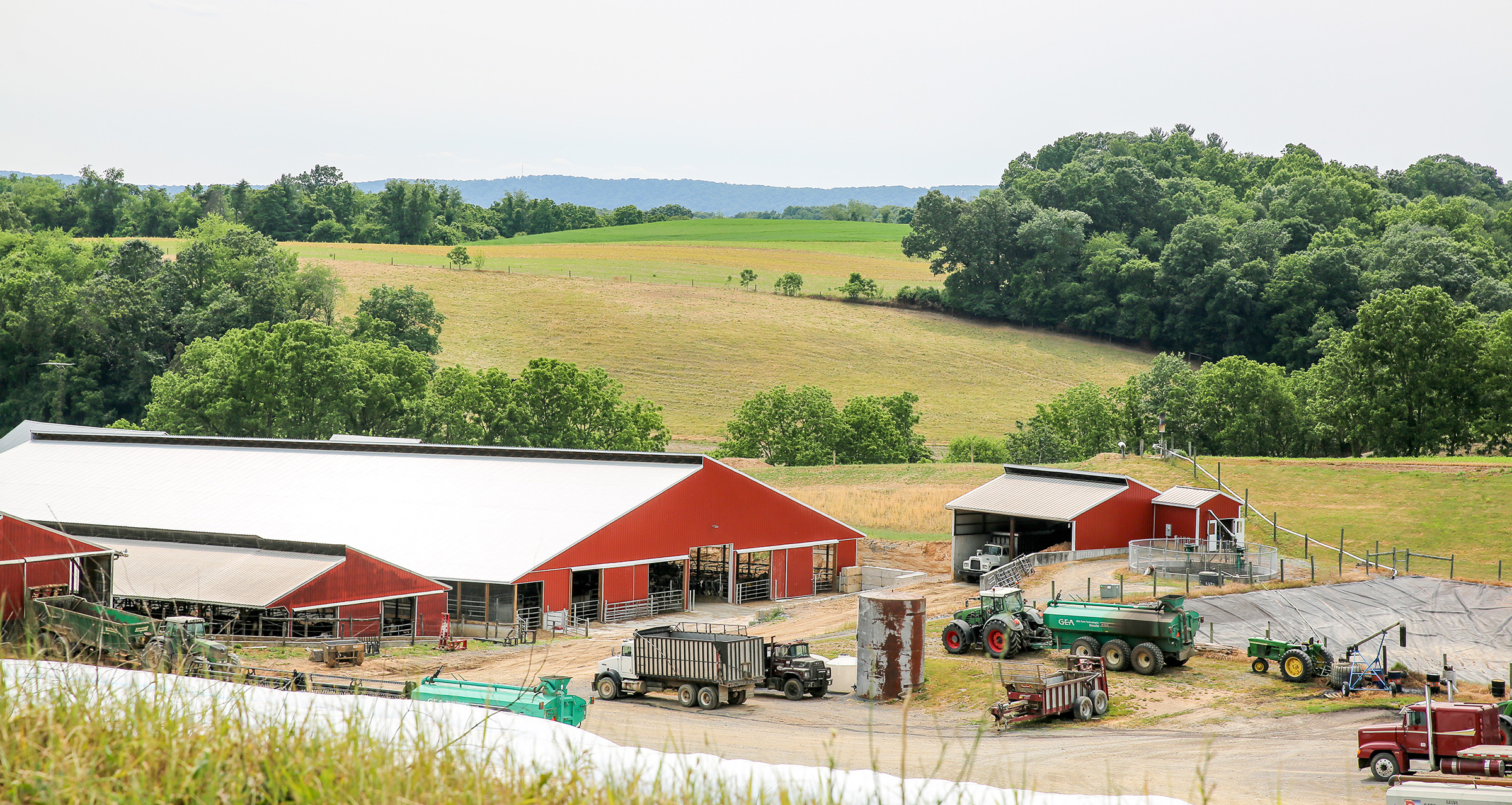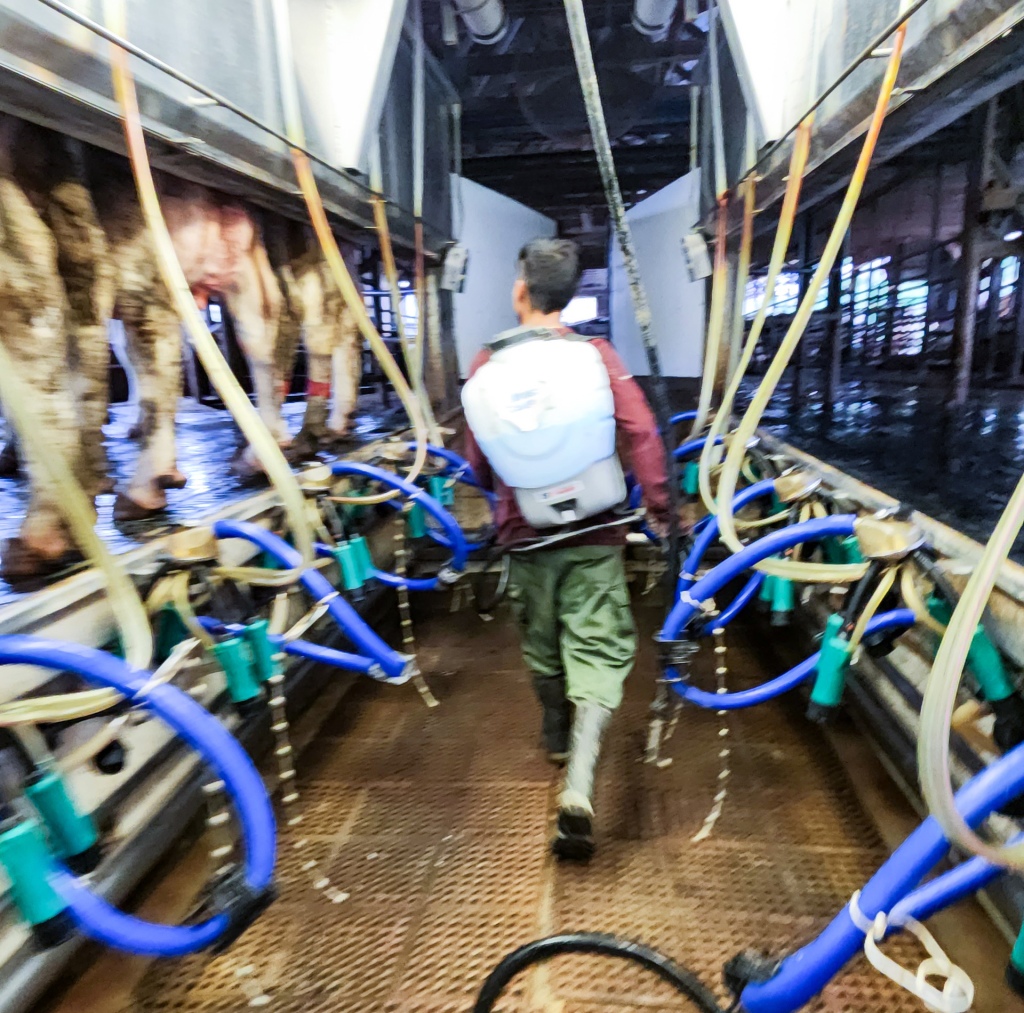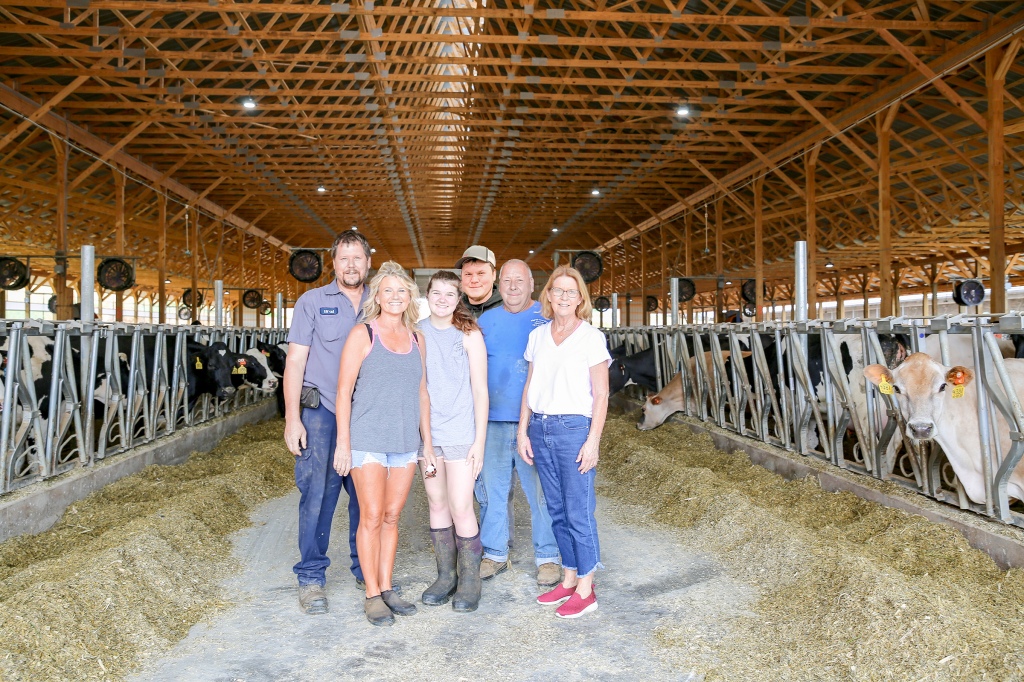
Palmers glad to have their Pigeon Cove herd together in new facility with deep bedded stalls and other cow comfort details
WARFORDSBURG, Pa. – “There are some days, of course, when we wonder why we do this, but mostly it is true that the challenges in dairy farming, and overcoming those challenges, are what drive us,” says Brad Palmer of Pigeon Cove Farms near Warfordsburg, Pennsylvania.
The Palmer family has long been progressive about their dairy herd producing high quality milk, while gradually expanding for the next generations in the picturesque Fulton County foothills of the Allegheny Mountains.
One challenge they navigated successfully over the past few years was the plan to bring under one roof the expanded herd that had been housed in a collection of smaller facilities as the multi-generational dairy farm was growing.
Three generations also enjoy that they farm together here – Brad and Linette Palmer operate the dairy with their children Logan and Hailey and Brad’s parents Lonnie and Debra.
Logan’s interests are mainly in the field work, growing forages for the cows. He and Brad run a custom harvesting business as well.
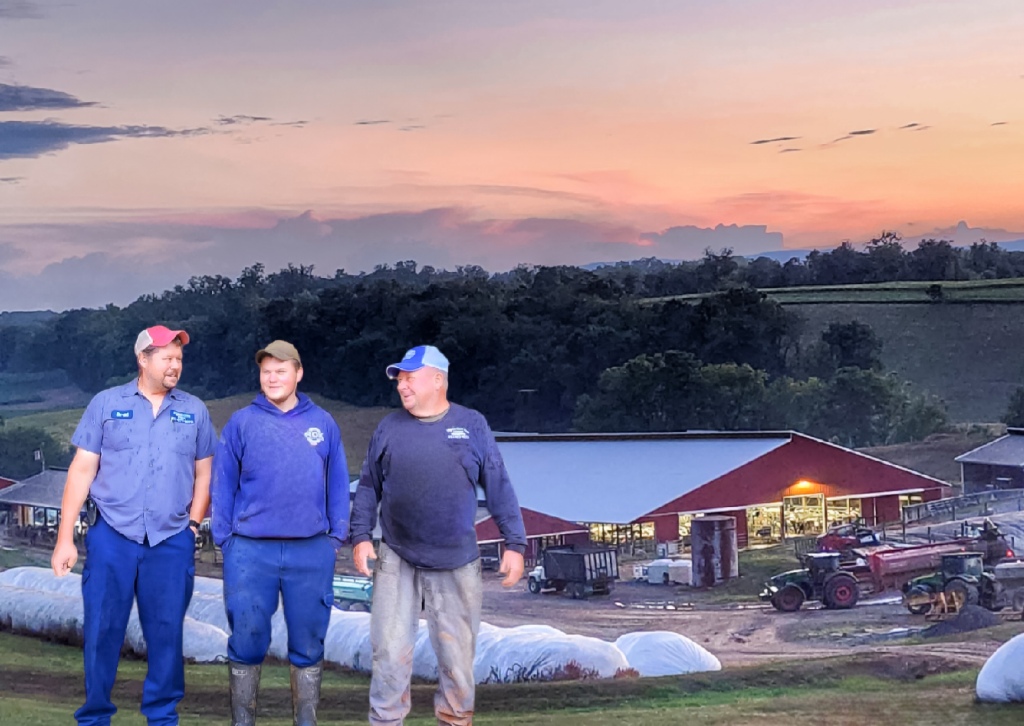
The Palmers farm 1800 acres, so this is a busy time of year. In the last week of May, they were finishing up planting and first-cut chopping with hay yet to bale.
Hailey enjoys taking care of the cows, especially the special Ayrshires in the herd.
Today, the 470-cow milking herd is predominantly Holsteins and Jerseys, with some Ayrshires in the mix. They produce a 94-pound herd average (3x) with somatic cell counts averaging 120,000.
“We do enjoy the Ayrshires,” Brad says with a grin and a nod to his daughter Hailey. She graduated from high school on May 30 and has already been helping her dad with herd management.
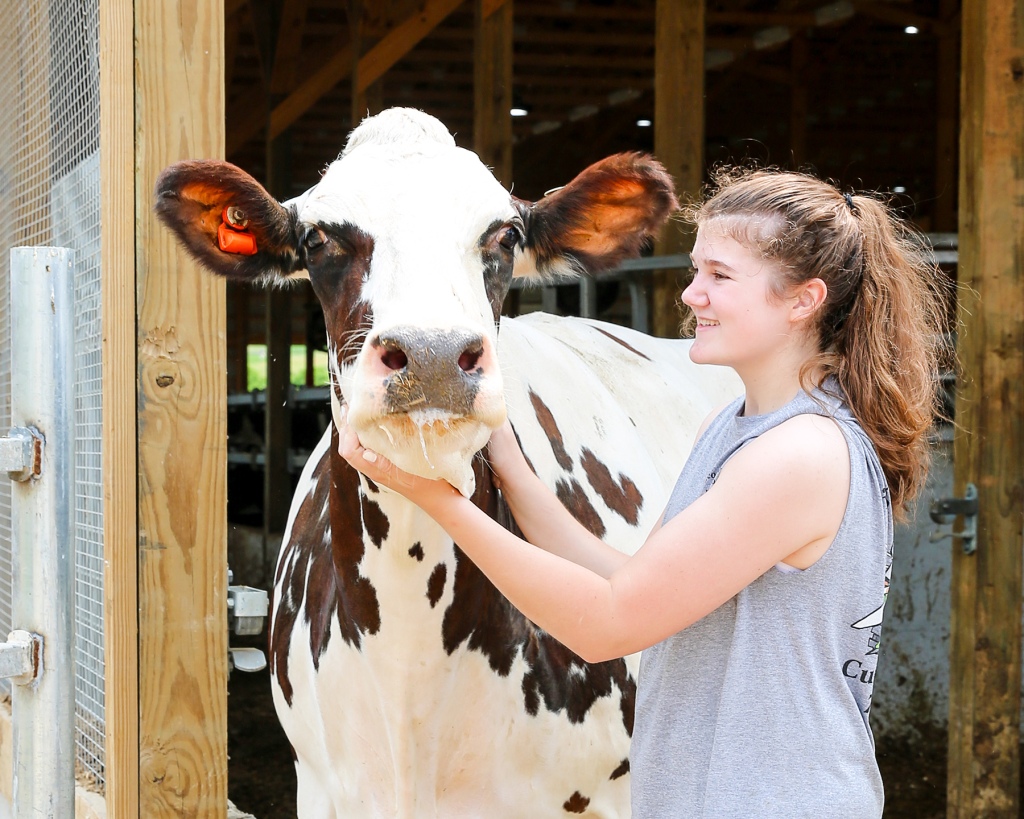
Hailey has grown up showing her Ayrshires, just like her mother. “I really like their temperament,” she says.
“We always had Ayrshires on the farm when I was growing up, so I showed them too,” shares her mom, Linette.
Before completing the new freestall facility, the Palmers were expanding slowly from 250 cows in 2015 to 440 by 2023 and 470 in 2024.
“We would build out an area, and grow into it,” Brad reflects.
“We were 55% overcrowded and ventilation was something we really wanted to focus on,” he explains.
In the fall of 2022, they broke ground on the new 6-row freestall barn with Franklin Builders doing the construction. They moved into the new facility on January 18, 2023.
The transition began with tearing down the assortment of smaller barns and lots, to fit the freestall barn into the existing footprint that made the most sense in terms of cow flow via the walkway to the existing milking parlor.
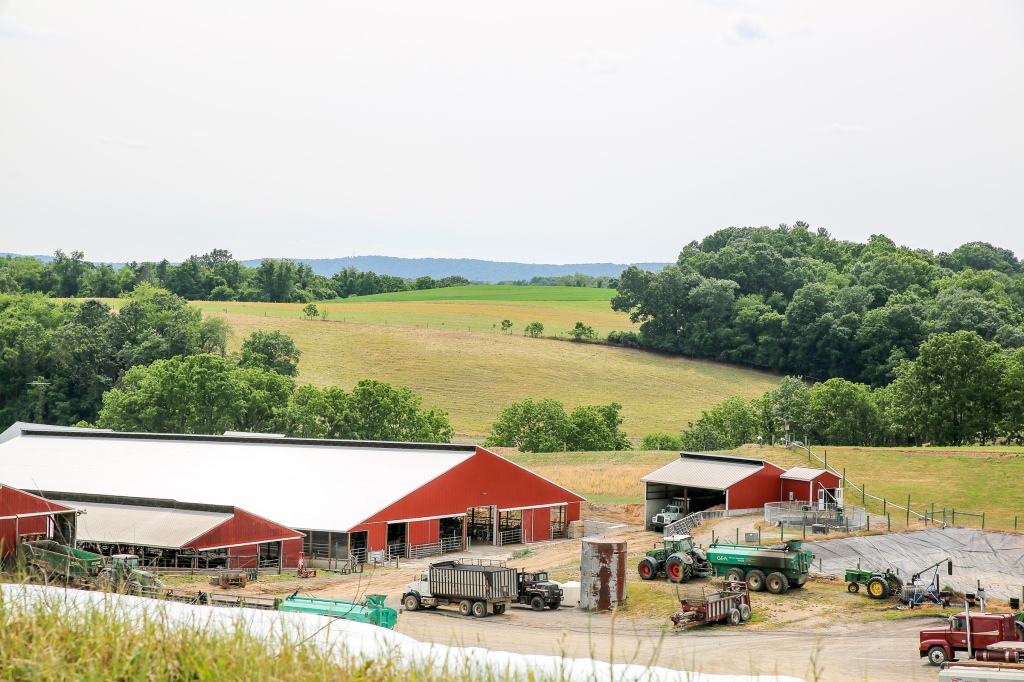
This meant that during the four months of construction, they housed and milked cattle at a separate farm that was empty. It was a challenging time.
“We were milking 200 up there, and were taking feed to them,” Brad recalls.
In 2012, they had already completed a barnyard runoff renovation project with a Pennvest grant, which included a covered manure lagoon and solids separator for composting and recycling manure solids.
They use the composted solids in the bedding scheme, admitting that their preference for deep-bedded freestalls left them with some challenges when they attempted using 100% manure solids for the bedding.
It was management heavy, and they weren’t happy with the results.
Today, the Palmers add shavings and hydrated lime. They find this combination works much better for cow cleanliness and SCC. It makes the comfortable deep beds easier to manage. They add the hydrated lime when they do bed maintenance every other day.
“We see the deep bedding as more labor intensive than mattresses, but we feel it is better for the cows,” says Brad, noting it’s a tradeoff they are willing to make. Since they are not set up for sand, the combination of compost solids, shavings and hydrated lime allows them to maintain the cow beds without changing the bedding completely.
It also contributes to drier air in the freestall barn compared with deep bedding using recycled solids, alone.
The Palmers run four groups – two mature cow groups, one group of fresh mature cows, and one group of first-calf heifers and Jerseys.
They have always put a keen focus on milk quality. Two years ago, before the new facility was completed, the came back to using Udder Comfort after having switched to another brand for a while.
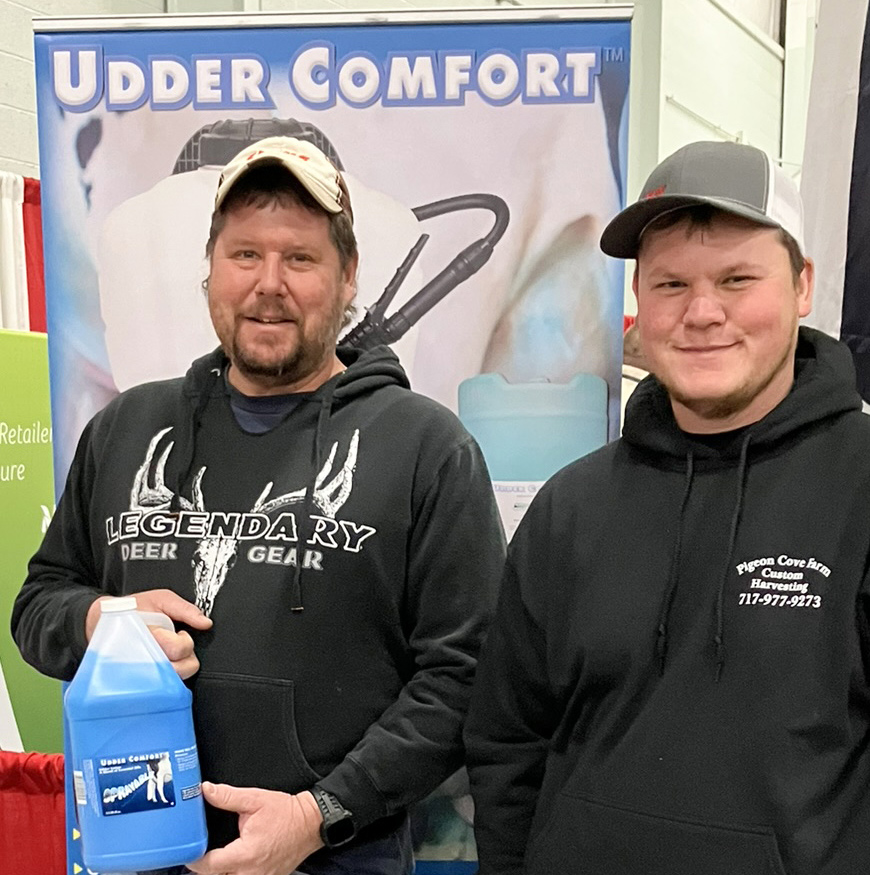
“We came back to it for its effectiveness,” Brad explains. “It’s really the best product for fresh cows, any type of swelling, hardness, or elevated SCC. Then, a year ago (June 2023), we began using the Udder Comfort Battery-Operated Backpack Sprayer. It really works well for doing groups.” (click to see video)
“We use the backpack every day to do the fresh cow group. They get Udder Comfort after every milking for 5 days after calving,” Brad reports. “This really helps with our milk quality and consistently delivers quality results.”
One thing they had with the old facilities was open air lots, so when they began planning to build a new freestall facility, ventilation was something they spent a lot of time thinking about.
The new barn is naturally-ventilated with curtained sidewalls. It uses a German-engineered Core Cool system of variable-speed fans for air circulation with strategically-placed sprinklers for heat remediation.
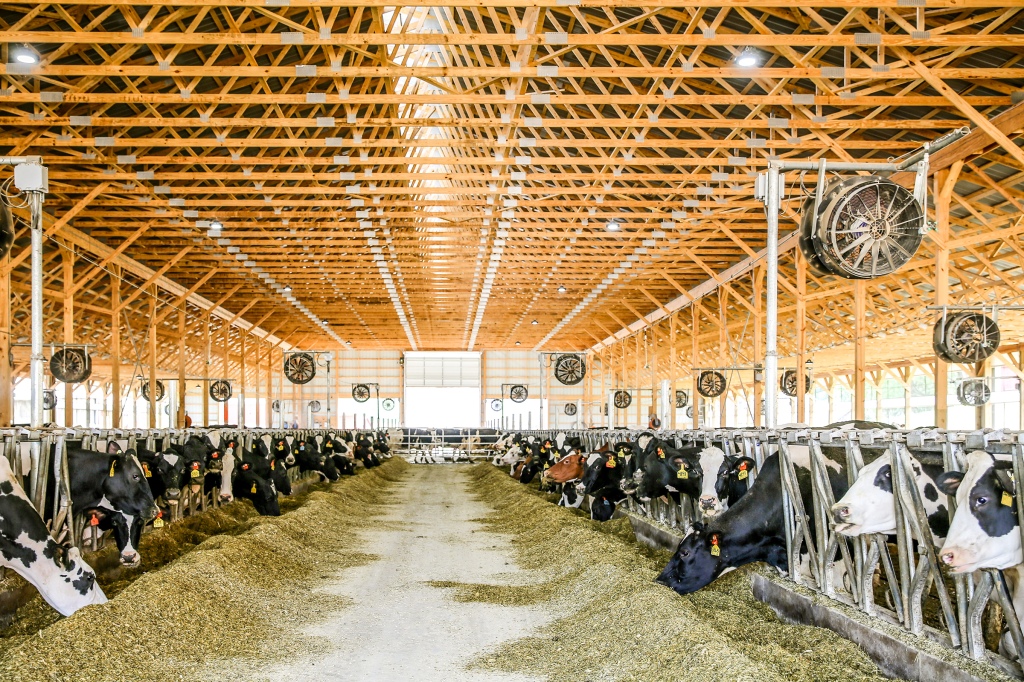
“It cost more upfront, but we were looking at the energy savings, and we liked that it is a German-designed system,” Brad shares.
A unique feature is the sprinklers are placed at intervals in front of the fans over the freestalls, not just the feedbunk. The combination of sprinklers and fans is designed to maintain a consistent core body temperature in the cow, by modifying the air in her environment to a more ideal and consistent heat and humidity index.
The system responds to the changing conditions inside the barn, as measured in the heat and humidity index via sensors that track it. By responding proactively to changing conditions, the system is designed to avoid temperature swings and the stress these swings produce on livestock.
At capacity, the system uses two gallons of water an hour. The rate of water usage and fan speed adjusts automatically — slowing down as the heat and humidity index in the barn cools down and ramping up as the index heats up.
The goal is to achieve a steady prevention of heat stress rather than responding to it with evaporative cooling. This means they don’t use sprinklers to wet the backs of the cows, which keeps the bedding and feed dry.
Being in the new facility for 18 months with this cooling system, Brad notes it is “working really well so far.”
As project cost-shares become available to improve manure storage and water quality (runoff) elsewhere in the dairy operation at Pigeon Cove, the Palmers are next targeting the housing and manure management of heifers they raise on the farm.
– By Sherry Bunting, portions previously published in Farmshine


